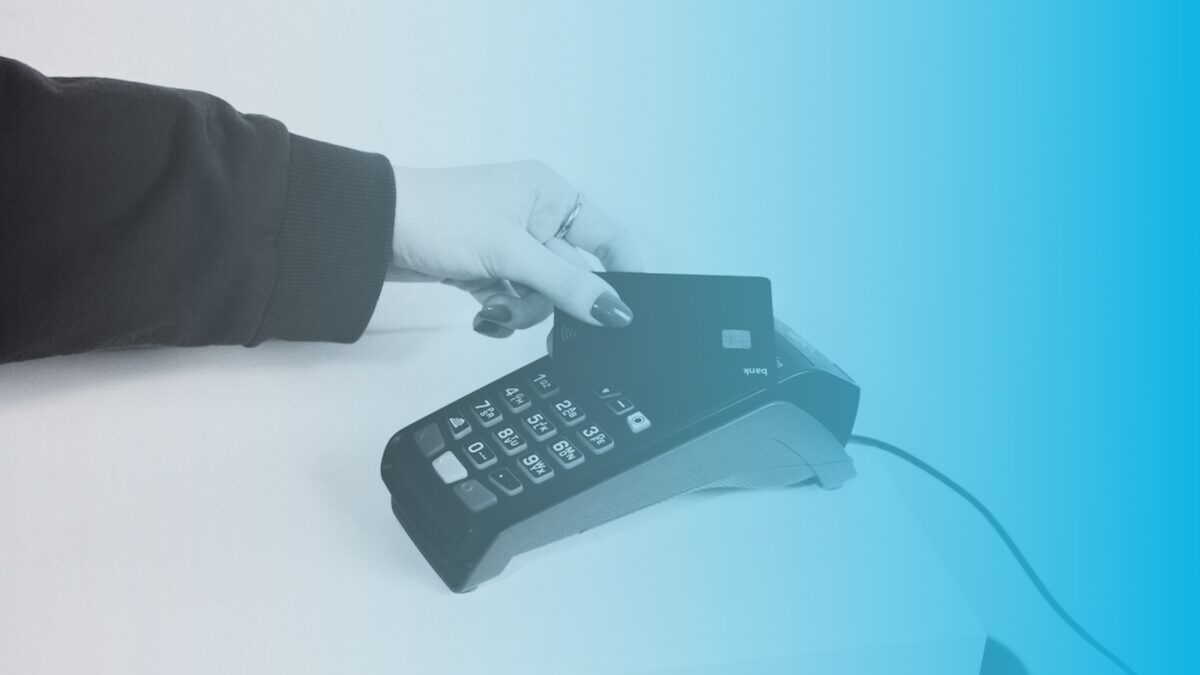Credit cards are essential financial tools that nonprofits can use to manage expenses, build credit, and increase financial flexibility. However, understanding how they work is crucial to maximizing their benefits while avoiding common pitfalls.
For nonprofits with unique financial needs, knowledge of credit card mechanics, fees, and best practices can help your organization leverage credit responsibly and efficiently.
Here, we’ll break down everything your nonprofit needs to know about how credit cards work, from basic concepts to advanced tips.
What is a Credit Card?
A credit card is a financial instrument that allows you to borrow money from a bank or credit card issuer to make purchases.
Unlike a debit card that draws directly from funds in your bank account, a credit card essentially lets you borrow against a credit limit that you can repay later.
For nonprofits, credit cards can offer a convenient way to manage operational costs, pay for emergency expenses, or cover large purchases over time.
Each credit card comes with a unique set of terms, including the Annual Percentage Rate (APR), fees, rewards, and a credit limit, all of which impact the cost and benefits of using the card.
Key Components of a Credit Card
- Credit Limit: This is the maximum amount you can charge on your card. The credit limit for a nonprofit may vary depending on your organization’s creditworthiness, which the issuer determines based on credit history, revenue, and other factors.
- Interest Rate (APR): The Annual Percentage Rate (APR) is the cost of borrowing on the card if you carry a balance. Nonprofits should seek cards with lower APRs to minimize costs if a balance is carried from month to month.
- Grace Period: Most credit cards offer a grace period, which is the time between the end of the billing cycle and the due date. During this period, you can pay off your balance in full without incurring interest charges.
- Fees: Credit cards come with various fees, such as annual fees, late payment fees, foreign transaction fees, and balance transfer fees. Nonprofits should evaluate these fees carefully, especially if the card will be used regularly.
- Rewards: Many credit cards offer rewards programs that let you earn points, cashback, or miles on purchases. Some cards have rewards tailored for nonprofits, including cashback on office supplies or travel rewards for nonprofit events.
How Credit Card Transactions Work
Here’s a step-by-step look at what happens when your nonprofit makes a purchase using a credit card:
- Making a Purchase: When you use a credit card to make a purchase, the card issuer pays the merchant on your behalf.
- Authorization: The merchant’s system contacts your credit card issuer to confirm that the credit limit allows the transaction. If approved, the transaction goes through, and the amount is deducted from your available credit.
- Monthly Billing Cycle: The card issuer sends you a statement listing all charges, fees, interest, and payments for that billing period.
- Repayment: You must pay at least the minimum payment by the due date to avoid late fees. If you pay the full balance by the due date, you’ll avoid interest charges.
- Interest Charges on Balances: If you carry a balance, the issuer applies the APR to calculate interest charges, which are then added to your balance.
Understanding these mechanics can help nonprofits manage expenses, avoid unnecessary interest, and maintain a good credit rating.
Nonprofit Resources
The Charity Charge resource hub is dedicated to providing tips, tools, and information to help your nonprofit create and grow a modern organization. Learn more
Types of Credit Cards for Nonprofits
Nonprofits have unique needs when it comes to choosing the right credit card. Here are a few common types that could be beneficial:
- Business Credit Cards: Many credit card companies offer business cards tailored to organizations with special spending needs, higher credit limits, and rewards geared toward business expenses.
- Low-Interest Credit Cards: Nonprofits with occasional cash flow gaps might prefer low-interest cards to minimize interest charges when carrying a balance.
- Reward Credit Cards: These cards offer points or cashback on purchases, which can be advantageous for nonprofits looking to maximize benefits on regular expenses.
- Secured Credit Cards: For newer or smaller nonprofits looking to build or establish credit, a secured credit card can be a helpful stepping stone, as these cards typically require a cash deposit that serves as collateral.
Selecting the right card can help nonprofits manage their finances effectively and align credit usage with the organization’s mission.
Managing Credit Card Debt and Interest
For nonprofits, effective debt management is essential for keeping operational costs under control. Here’s how credit card interest works and tips for managing debt:
- Interest Calculation: Credit card interest is typically compounded daily, meaning that interest is added to your balance each day, increasing the amount owed over time.
- Avoiding Interest Charges: If possible, pay off the balance in full each month. By doing so, your nonprofit can avoid paying interest altogether and enjoy the convenience of credit without the extra costs.
- Using Promotional APRs: Some credit cards offer 0% introductory APRs on purchases or balance transfers. Nonprofits can use these promotions strategically to finance larger expenses or consolidate debt interest-free for a limited period.
- Consider Balance Transfers: If your nonprofit has high-interest credit card debt, consider transferring it to a card with a lower APR. Be cautious, though, as many balance transfer cards have fees that could offset savings.
How Credit Cards Impact Credit Scores for Nonprofits
Credit cards can affect your nonprofit’s credit score, which is essential for securing better financing terms in the future. Here’s how:
- Payment History: On-time payments are critical, as missed or late payments can negatively affect your nonprofit’s credit score.
- Credit Utilization Ratio: This is the amount of credit you’re using relative to your credit limit. A high utilization rate can lower your credit score, so aim to keep balances below 30% of the credit limit.
- Credit Age and Mix: Using credit cards responsibly can improve your nonprofit’s credit profile over time. Having a mix of credit types (e.g., credit cards, loans) may also positively impact creditworthiness.
Monitoring your nonprofit’s credit score regularly can help identify opportunities to improve credit standing, enabling access to better financial products in the future.
Advantages of Using Credit Cards for Nonprofits
Using credit cards wisely offers several benefits to nonprofits:
- Streamlined Expense Management: Credit cards can help track expenses, making it easier to manage and categorize spending across different departments.
- Improved Cash Flow: Credit cards provide access to funds that can help cover expenses during cash flow gaps.
- Rewards and Discounts: Many credit cards offer cashback, rewards, or discounts that can reduce costs for frequent nonprofit expenses.
- Building Credit: Responsible credit card use can improve your nonprofit’s credit profile, which may open up access to larger lines of credit or favorable terms.
By choosing the right card and using it strategically, nonprofits can enhance financial flexibility and manage expenses more efficiently.
Tips for Nonprofits to Use Credit Cards Responsibly
To avoid pitfalls and maximize benefits, here are some tips for responsible credit card use:
- Set a Clear Spending Policy: Define spending limits, categories, and protocols for authorized users to avoid misuse or excessive charges.
- Monitor Transactions Regularly: Check credit card statements regularly to ensure accuracy and detect unauthorized charges.
- Pay Balances in Full: Whenever possible, avoid carrying a balance by paying off the entire amount each month to minimize interest.
- Leverage Rewards Carefully: Use rewards programs to benefit the organization without overspending just to earn points.
- Use Alerts and Autopay: Setting up alerts or autopay for due dates can help avoid late payments and potential fees.
These practices help nonprofits control credit card costs and maintain a positive credit profile.
Frequently Asked Questions
Can Nonprofits Get Special Credit Card Terms?
Yes, some issuers offer credit cards with lower interest rates, reduced fees, or rewards tailored to nonprofit needs.
Is a Business Credit Card Better for Nonprofits Than a Personal Card?
Yes, business credit cards are generally better suited for nonprofits, offering higher limits, relevant rewards, and expense tracking features.
How Can Nonprofits Avoid High Interest Charges?
Nonprofits can avoid high interest charges by paying the balance in full each month or using credit cards with low or promotional APRs.
What Happens If a Nonprofit Misses a Credit Card Payment?
Missed payments may result in late fees, a penalty APR, and can negatively impact the organization’s credit score.
How Do Credit Cards Help with Financial Tracking?
Credit cards provide detailed statements and expense categorizations, simplifying financial tracking and reporting.

















